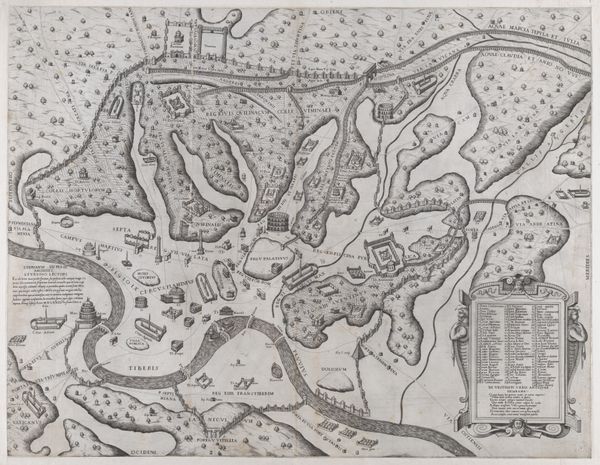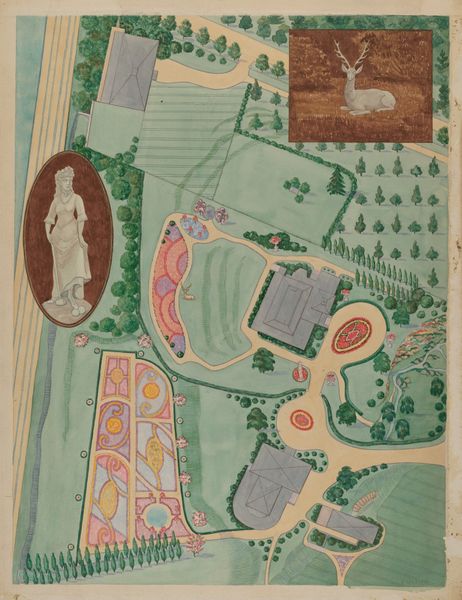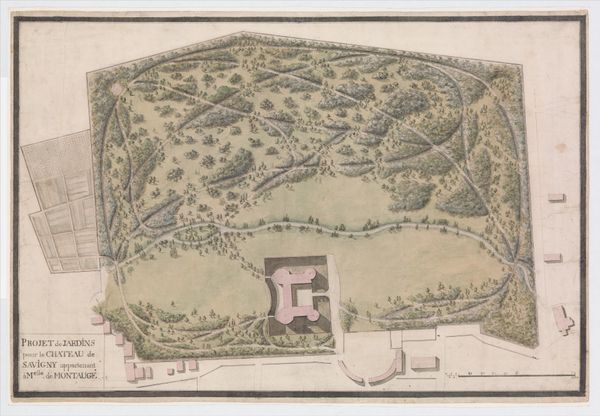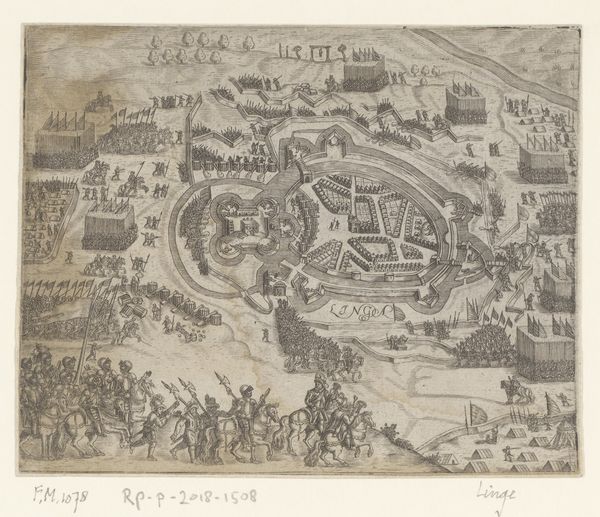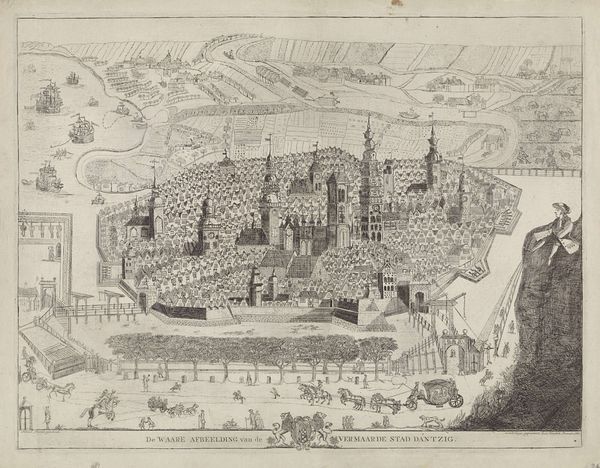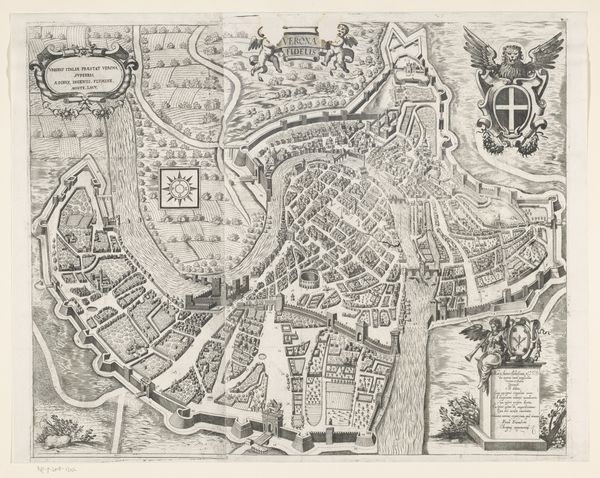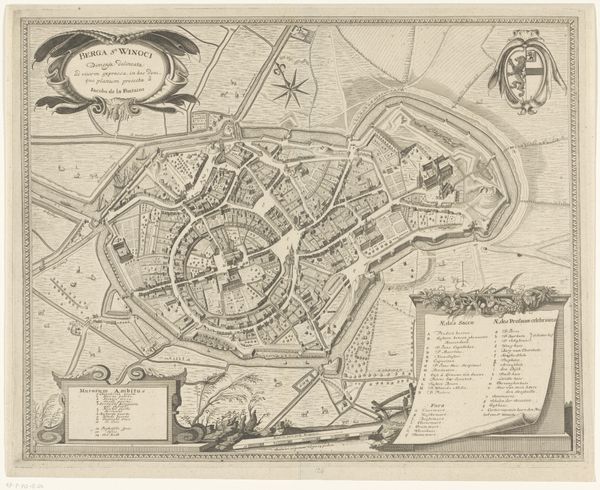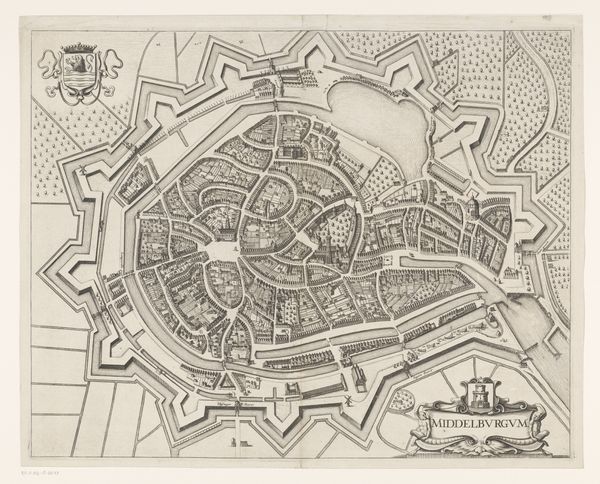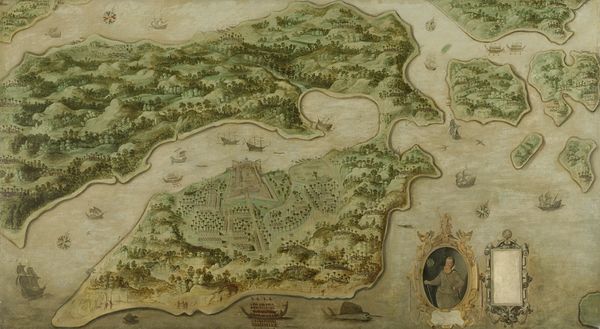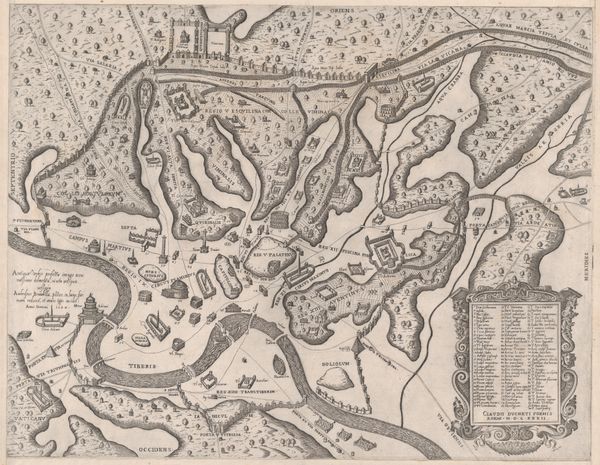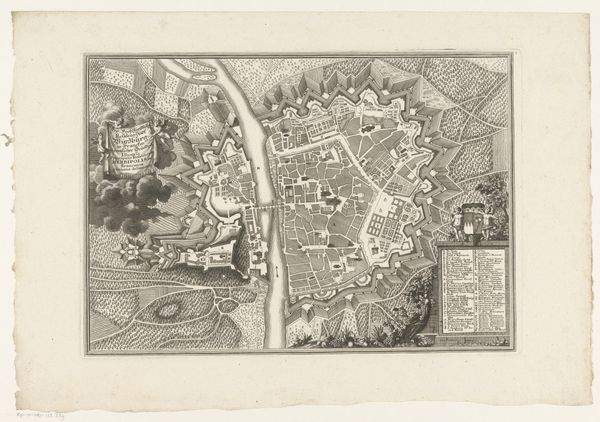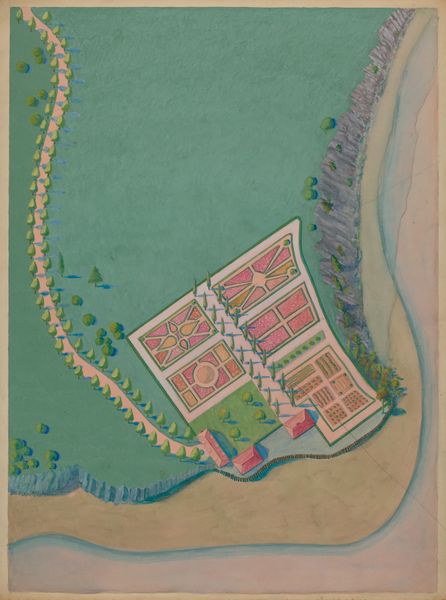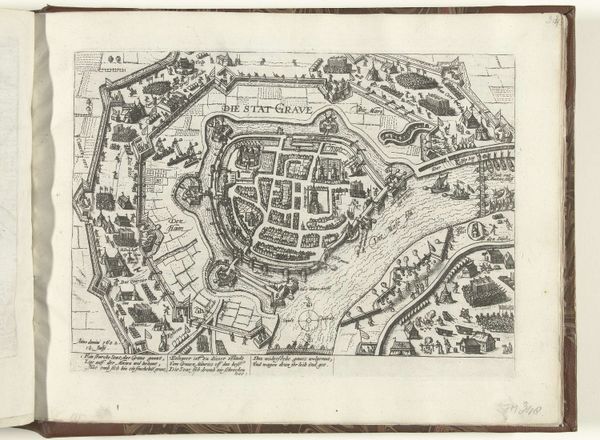
drawing
drawing
asian-art
landscape
handmade artwork painting
watercolor
Dimensions: Overall: 29 x 40 5/8 in. (73.7 x 103.2 cm) Framed: 39 3/4 x 50 3/4 in. (101 x 128.9 cm)
Copyright: Public Domain
Curator: Here we have a fascinating drawing, "Fortified City of Ranthambhor," dating from around 1800 to 1818. It's rendered in watercolor, offering a detailed plan of the city. Editor: My first impression is one of meticulous care. It’s like a bird's eye view of a secret world, with winding rivers and layered fortifications suggesting both power and vulnerability. Curator: Indeed. Look closely, and you'll observe how the artist, Bagta, likely used readily available materials—paper, pigments, and fine brushes sourced from the region. Consider the laborious process of grinding pigments by hand. It's important to remember the conditions under which art like this was produced. The scale of the city's walls seems exaggerated perhaps to emphasize their role? Editor: Yes, and notice the almost dreamlike quality, almost as if they are symbols of safety but also confinement, within nature's embrace. Water, so central to life, surrounds the city. Perhaps symbolizing purity, sustenance, or the cyclical nature of time. What does Ranthambhor itself mean in terms of historical context? Curator: Ranthambhor was a significant fortress known for its strategic location. Its repeated conquest underscores its value—and by illustrating it with watercolor on paper Bagta provides access to that strategic insight, possibly for those governing or planning expansions. It also brings into question art as merely ornamental versus art that could inform the ruling or elite class. Editor: Right, and given that fortifications symbolize power, seeing it laid out in plan form invites reflection on what a ruler values—military might, secure borders, perhaps a connection to divine authority symbolized by hilltop temples. Or, simply what he's trying to present to those who commissioned it. Curator: Exactly. Understanding how watercolor production played into this commission is crucial. Who was able to commission art and why would a fortress require visual rendering at that time? Its rendering on a flattened 2-dimensional plane invites those of the ruling class to almost 'play' at power. Editor: Studying this city plan makes one appreciate not just its physical layout but also the interwoven cultural values embedded within its design. The work itself also evokes an element of control, of 'making a mark.' Curator: I agree, it is hard not to ponder upon who produced such a painstakingly mapped perspective view and also the work’s significance in accessing understandings of power and landscape itself. Editor: An artwork that simultaneously details architectural construction and whispers symbolic histories to those willing to look.
Comments
No comments
Be the first to comment and join the conversation on the ultimate creative platform.
